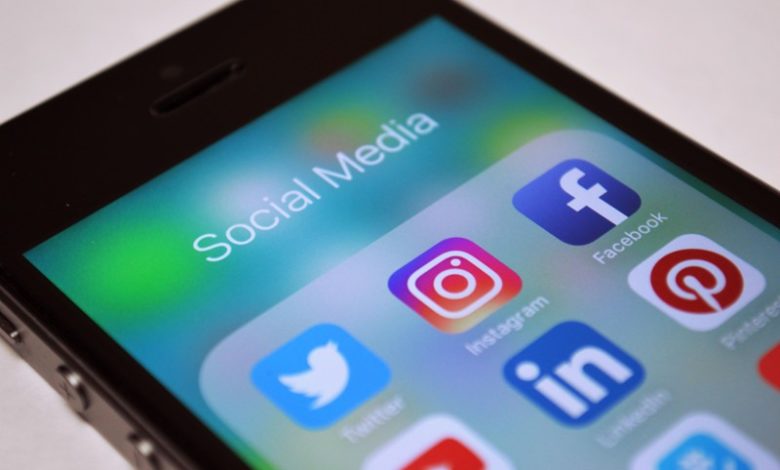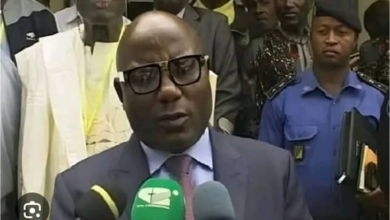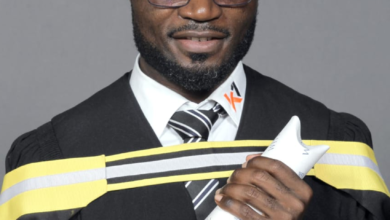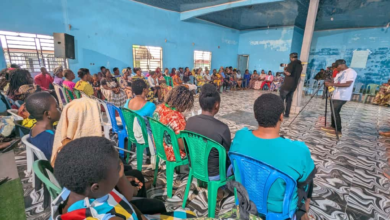Social Media as the new “public sphere” in the Cameroon Anglophone Conflict

By Hans Ngala
This article was first submitted by the author at the University of the Witwatersrand, Johannesburg
Introduction
This article seeks to examine the “public sphere” theory propounded by German philosopher and sociologist, Jurgen Harbermas and looks at it through the lens of social media, which it sees as the new “public sphere”. It argues that given how restrictive Cameroon’s government has been in relation to discussions by the media and ordinary citizens that pertain to the ongoing separatist conflict, social media has become the new public sphere. It starts with a description of what social media is and then goes on to explore the theory of the public sphere as well as agenda-setting in relation to the crisis.
The public sphere is a concept widely studied in many different disciplines such as political science, sociology and communication sciences. It is crucial for the well-functioning of democracy, to have a well-structured process which creates the public opinion as a synthesis of individual thoughts acting for the common good. The concept of a public sphere in itself and its formation process has gone through a lot of changes since the time where the German scholar Jurgen Habermas first defined it. The advent of new media and the development in the communication technology have brought huge transformations even in the conceptual terms of “public”, public sphere and public discourse. Web communication, especially the communication handled in the digital environment is a completely new reality which needs to be explored. Social media like Facebook, Twitter, Instagram, Youtube etc, are a new communication tool being used by public actors to communicate with their audiences or publics.
Awasom (2012) writing on the public sphere in Cameroon argues that “Habermas’ concept of a public sphere encompasses a variety of meanings, including social sites where meanings are articulated, distributed and negotiated, as well as the collective body constituted by – i.e. ‘the public’ in this process. Thus, any area in social life where people congregate and freely discuss and identify societal problems and, through that discussion influence public and political action, constitutes the public sphere”. He also posits that “Habermas’ concept of public sphere encompasses a variety of meanings including social sites or arenas where meanings are articulated, distributed, and negotiated, as well as the collective body constituted by, and in this process – ‘the public’.
In the past, audiences were considered to be those citizens who read the newspaper in a cafe, listened to the radio on the way to work or watched television with their family in the lounge at the end of the day. Media consumption could easily be associated with a particular time and space – often having a certain sense of ritual (Couldry, 2003; Sparks; Tulloch, 2000). Today, the situation is quite different. The new nature of audiences is diffuse, but at the same time connected to the day-to-day, which is precisely one of the main features of what Schroder et al. call the multifaceted nature of audiences (Schroderet al., 2003). However, the new media ecosystem has also brought another change or a new dimension with regard to the nature of audiences. According to Livingstone:
“…Today’s media environment is reshaping the opportunity structures by which people (as audiences and as mediated publics) can participate in an increasingly mediatized society” (Livingstone, 2013, p. 24).
How Have Social Media Enhanced Democracy?
According to Baruah (2012), “the term Social Media refers to the use of web-based and mobile technologies to turn communication into an interactive dialogue” (pg.1).
The website makeawebsitehub.com lists more than 65 different social media sites, with the most popular ones being Facebook, Whatsapp, LinkedIn and Instagram according to the site.
According to Brenne (2016), “the Internet is both a remediation and a cause of the destabilization of participatory democracy” (pg.1). A case in point would be the Arab Spring.
Tunisians had been suffering from corruption, a high rate of unemployment, and poor governance amongst other difficulties, for some years (Kallio and Häkli, 2016). Although people were not happy with the status quo, everyday life carried on normally as citizens worked to make ends meet. However, on 17 December 2010, 26-year old Mohamed Bouazizi’s unlicensed cart of fruit and vegetables was confiscated by a police officer and Bouazizi, in trying to pay the imposed 10 dinar (about 60 Rand) fine, was insulted and slapped. The ensuing scuffle led to police reinforcements, with the arrest, beating, and social humiliation of Bouazizi (Kallio and Häkli2016; Pugliese2014). After unsuccessfully trying to reclaim his cart the same day; and due to the injustice he experienced, Bouazizi went to the provincial government building where he set him-self ablaze, and later died.
On 18 December 2010, what became known as the Arab Spring began in Tunisia, with many Tunisians demonstrating on the streets in response to Bouazizi’s self-immolation. The protests grew increasingly large on a daily basis and could not be suppressed even though violent crackdowns were ordered. By 14 January 2011, the situation led to the ousting of then president Zine El Abi-dine Ben Ali after 23 years in power. Tunisians had used social media such as Facebook and YouTube to capture images of what was happening in their country and shared their messages with the outside world in such a way that could not be disputed by the government. It was the combined effect of traditional media, such as television, and new media that brought attention to what was happening in Tunisia (Khondker, 2011). The Tunisian revolution would almost immediately have a ripple effect as uprisings began in some neighbouring countries as long-standing autocratic rulers in Tunisia, Egypt, and Libya were overthrown (Arena, 2017).
Brenne (2016) also argues that “social media encourages civic engagement in nuanced ways” and that “social media imitates a structural public sphere”; defined by Habermas as an arena where citizens discuss public affairs (Habermas, 1991).
Nganji and Cockburn (2020) argue that the oppression felt by Tunisians is something synonymous to the marginalisation felt by Anglophone Cameroonians
What Has Been the Role of the Internet and Social Media in the Cameroon Anglophone Conflict?
Cameroon, located in West-Central Africa was first annexed by the Germans in 1884. After Germany’s defeat in the First World War, Britain and France split up the country between themselves. (Nyamjoh, 2005). Britain took the smaller portion which was later to become British Southern Cameroons and West Cameroon while France took the larger portion which was French Cameroon.
What has come to be known as the Anglophone Crisis in Cameroon is a long-running issue of identity and self-determination that runs as far back as the 1960s when the then British Southern Cameroons had to choose in a vote to join either Nigeria to the west or French Cameroon to the east in order to gain independence. Southern Cameroons in a UN-led plebiscite chose to join French Cameroon and became West Cameroon, while French Cameroon became East Cameroon. The new country was supposed to function as a federal republic with rotation of power between the two semi-autonomous states . However, by 1972, then president Ahmadou Ahidjo dismantled the federal structure in favour of a “unitary state”, to the dismay of English-speaking Cameroonians.
Anglophone Cameroonians felt marginalized and some began asking for a return to the federation, while others asked for outright secession (or what they termed the “restoration” of the state of Southern Cameroons)
Over the years, there have been protests but the current phase began in October 2016. Lawyers protested against the government’s decision to impose French as the language of discourse in English-speaking courtrooms. A month later, teachers also protested government’s decision to appoint mainly French-speaking teachers to English-speaking schools.
The government responded with a brutal crackdown by arresting lawyers and teachers. However, talks began with the government by a joint group of mainly lawyers and teachers called the Cameroon Anglophone Civil Society Consortium (CASC) but the talks soon collapsed when the group insisted on a return to the hitherto federal structure.
The government outlawed the Consortium – as it was fondly referred to by the masses, arrested its leaders and shutdown the internet in the region for three months (Access Now, 2017). Media outlets were also banned by Cameroon’s National Communications Council (NCC) which regulates media operations in the country – from commenting on the crisis (Committee to Protect Journalists, 2016). One daring radio station, Radio Hot Cocoa ran a show about Anglophone grievances and was shut down by the authorities (Committee to Protect Journalists, 2017) and citizens were forbidden from having any discussions about the conflict.
This hushed up environment drove most discussions from the public space (or sphere) to mostly online in spite of the internet blackout ( Hwang et al., 2016). Most citizens used virtual private networks (VPNs) and circumnavigated the blockade.
More than ever before, discussions started happening online and took up speed after the government restored internet access following a global outcry, mostly by civil society groups.
A new era of Anglophone leadership was ushered in –mainly previously unknown people with a large following on social media. For example, Mark Bareta who is described on his Facebook page as an “activist” and Tapang Ivo – both became leading voices with an even larger following. They declared ghost towns – days on which no movement or businesses are allowed and they also organized live Facebook broadcasts during which thousands would join in and various issues relating to the conflict would be discussed.
It would seem that a new Anglophone public and an Anglophone public sphere were bred online mostly. Habermas’ definition of a public sphere is the first and founding trigger to classification attempts of the formation of public opinions and the legitimisation of state and democracy in post-war Western societies. The public sphere is seen as a domain of social life where public opinion can be formed. (Habermas, 1991, pg.398). Awasom (2012) writing on the public sphere in relation to Cameroon, sees it as “any area in social life where people congregate and freely discuss and identify societal problems and, through that discussion influence public and political action” (Awasom, 2012).
One basic understanding of ‘a public’ describes it as groups of people that evolve in response to issues, which are important for the individuals concerned – Anglophone Cameroonians in this case. These individuals are the citizens that elect the state. This early concept has been brought up by John Dewey (1927). According to Dewey, the public as such comes into being when significant issues that affect them negatively arise. Only then do they band together and make themselves heard in the political process.
This assertion holds true in the case of Cameroon according to Langmia (2008) who states that “citizens create a public sphere for democratic deliberative purposes” and sees it as “a space to debate, dialogue, discuss and analyse pertinent political, social, economic and cultural issues affecting their relationships with the state. Cameroonian citizens in the diaspora have decided to form a democratic media public sphere”.
Habermas’ Public Sphere and Digital/Social Media
In The Structural Transformation of the Public Sphere (1962), Habermas discusses the rise of what he calls the bourgeois public sphere during the 17th and 18th Centuries in Europe. Amongst other things, this public sphere was made possible through the circulation of texts (e.g. novels, pamphlets, newspapers, magazines, journals of literary criticism) and physically embodied in public (non-state) meeting places, such as the salon or coffee houses or “related private contexts of sociability in which argument and discussion could take place” (Warner, 2002, pg.47). It was a sphere where issues that were considered of public importance or concerned the ‘common good’ could be debated, discussed and deliberated in a rational-critical way by private individuals. This is considered the birth of a civil society separate from the state, which could articulate and exercise its power in relation to the state and its institutions.
It would appear this was the case in relation to Cameroon where a large number of dissenting voices have (largely based out overseas) too have lead democratic discussions via social media platforms.
Langmia (2008) puts it thus:
“All in all, the internet has become the public sphere for both Cameroonian men and women to come together, and question the role of their government and opposition leaders on the kind of policies and goals they envision for Cameroonians at home and abroad. It also a forum for women to resolve pressing needs of the poor and weak in Cameroon”. He goes on to add that “citizens create a public sphere for democratic deliberative purposes.”
Scholars like Fraser (1992), Youngs (2004) and McLaughlin (1993) have accused Habermas of allowing the public sphere to be colonized by men. In their view, men dominate the public sphere – raising the question of whether the public sphere is synonymous with patriarchy. Fraser’s argument that women were deliberately left out would seem to relate to Cameroonian society too.
Conclusion
It is apt therefore to summise that the internet has become the new public sphere in the case of Cameroon because of how ruthlessly the government there crushes any form of dissent.
Mahlouly (2013) argues that the historical context in which Habermas describes the emergence of the bourgeois public sphere helps distinguish the characteristics of public opinion shaped by mainstream and digital media. First of all, it is important to recall that, to a certain extent, the normative public sphere can be considered as an elitist process, through which highly educated social classes from the eighteenth century and beginning of the nineteenth century in France, Germany, or Great Britain, gained leadership and political influence. Indeed, leading public opinion by becoming a public figure was not only the privilege of the intellectual elite, but also a groundbreaking process for which most people could hardly understand the cultural and political outcome.
Mahlouly further maintains that “one of the reasons why social scientists distinguish virtual environments from the normative public sphere is because digital technologies provide everyone with the opportunity to contribute to public discourses”. In other words, the factors likely to affect the rationality of social interactions, as well as the sustainability of public opinion in a digital world, might reside in the fact that the online public sphere provides every citizen with the opportunity to express himself publicly. This is one of the most significant differences between Habermas’ model of a bourgeois public sphere and the online public spaces of the twenty-first century.
It is also worth noting how Cameroonian academic Fru Awasom (2012) makes a comparison between the Parisian cafes and the palm-wine drinking joints. He equates the palm wine drinking joints in Cameroon’s Anglophone city of Bamenda to the cafes of Paris and says they helped shape public discourse on the pertinent issues of the day in Cameroon.
Finally, Evidence shows that digital debates and mobilizations are largely ignored if they are not covered by conventional media, specifically, television (Schäfer, 2015). For example, literature on the Arab Spring and the Occupy movements emphasizes the digital public sphere’s capacity to help organize, mobilize, and call to collective action (Bannon, 2004; Fenton and Barassi, 2011; Tremayne, 2014; Wilson & Dunn, 2011). However, the ultimate Internet role is questionable (Markham, 2014) and depends on its positive interactions with conventional media in a “hybrid” communicative system (Chadwick, 2013). Decisive battles for social meaning construction still take place and are validated in the mainstream media (Carragee and Roefs, 2004, p. 225).



